Italy is starting to feel long ago and far away, so it's past time I finished blogging about it. This post is about two Umbrian towns: Todi, which Tyler and I visited together after our night at Titignano, and Spoleto, which I went to see by myself on Tyler's last day of measurements in Perugia.
Like Assisi's, Todi's buildings have a remarkably consistent look. Every street in this hilltop town looks much like the one below--i.e., every street is lovely.
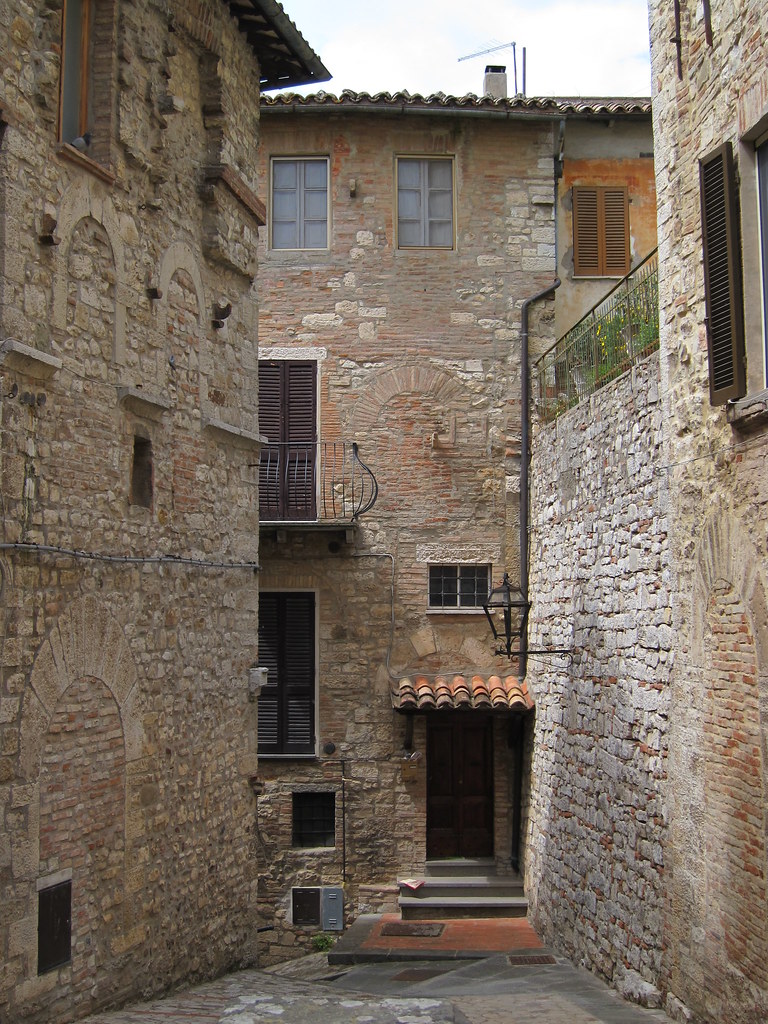 |
| Count the arches! |
As usual, we found a church tower to climb. The sweep of red roofs in all directions made for beautiful views.
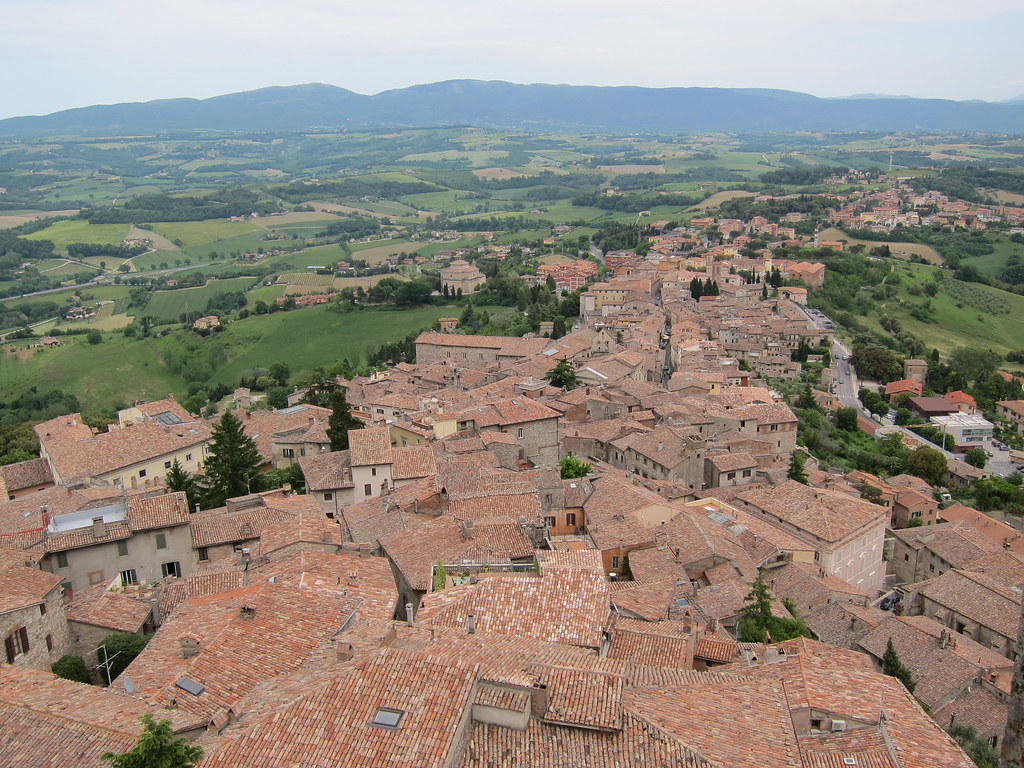
The arches over the doors of the church, like so many in Umbria, were adorned with column after column, each carved in a different intricate pattern.

One of the wonderful things about Italy is that there are drinking fountains everywhere. (All of Germany's decorative fountains have plaques proclaiming them "KEIN TRINKWASSER," and American-style drinking fountains are almost unheard of.) I particularly liked this angry yet helpful duck.

For those interested in sociological aspects of our travels, I photographed this notice board announcing deaths in Todi. Some of them are funeral announcements, some are from families thanking the community for its support in their time of grief, some are memorial notices from societies the deceased belonged to. We saw boards like this one in a few other Umbrian towns, too. I think it's both a nice tradition and a good way to learn some new Italian names.
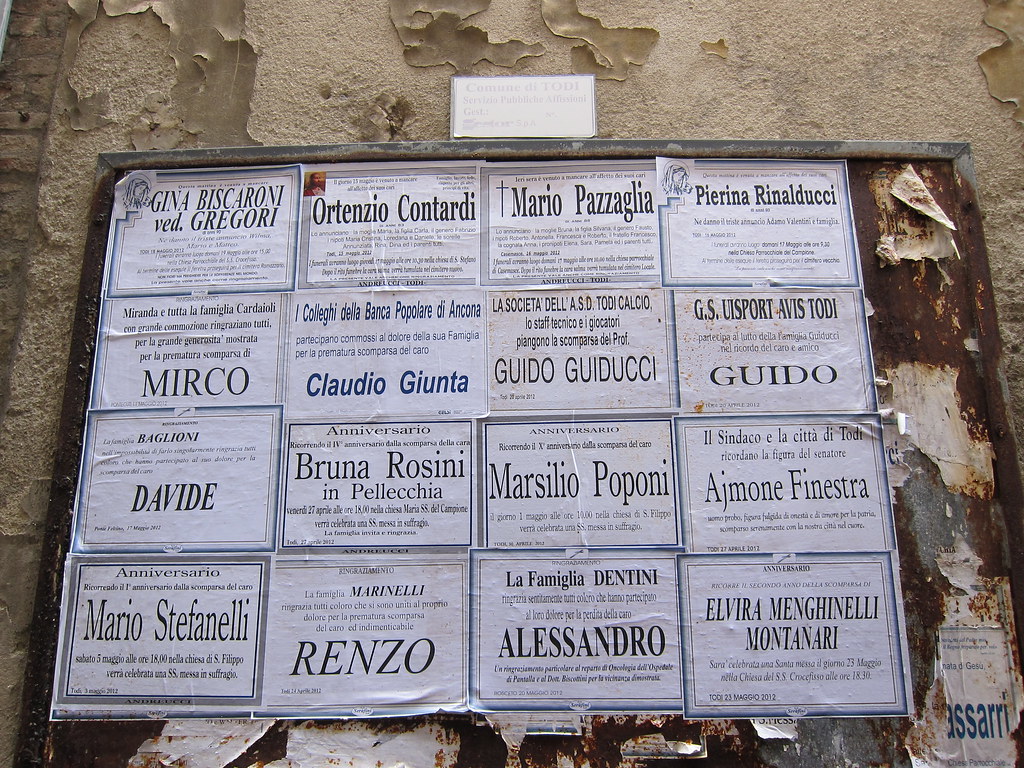
As you can tell, Todi was very pretty, but not the most stimulating place we visited. The most exciting part of the trip was trying to get home. The train station was at the bottom of the hill, and though there was a bus, we feared that it would get us to the station to late to get tickets. Google told us it would take about 35 minutes to walk down to the station, but not that we would have to walk on the shoulder of a small highway the whole way. When we finally made it to station (with shoes full of plant matter, but otherwise none the worse for wear), the ticket office was closed. A sign informed us that we could buy tickets at a shop on the main square--back up at the top of the hill. Luckily, the conductor sold us tickets on the train with no more reproach than a weary look that clearly said "
turisti."
Spoleto's train station is a mere 10-minute walk from its old town, and the slope of the hill it sits on is fairly gentle, so it was the easiest of the hill towns to visit. As you'll see, though, the buildings get cooler the farther up the hill you go. This is a picture of a section of the city wall in which you can see several different building techniques, from several different centuries. The earliest part, the middle-right section where the stones are unshaped, dates from the 1st century BC.

After a lunch of polenta with gorgonzola sauce and roasted vegetables (every bit as delicious as it sounds) I followed the signs for the Roman theater, my first. A church and cloister were built over it some time in the Middle Ages. The church, now an archaeological museum, still stands, taking up about half of the space that used to be the stage.
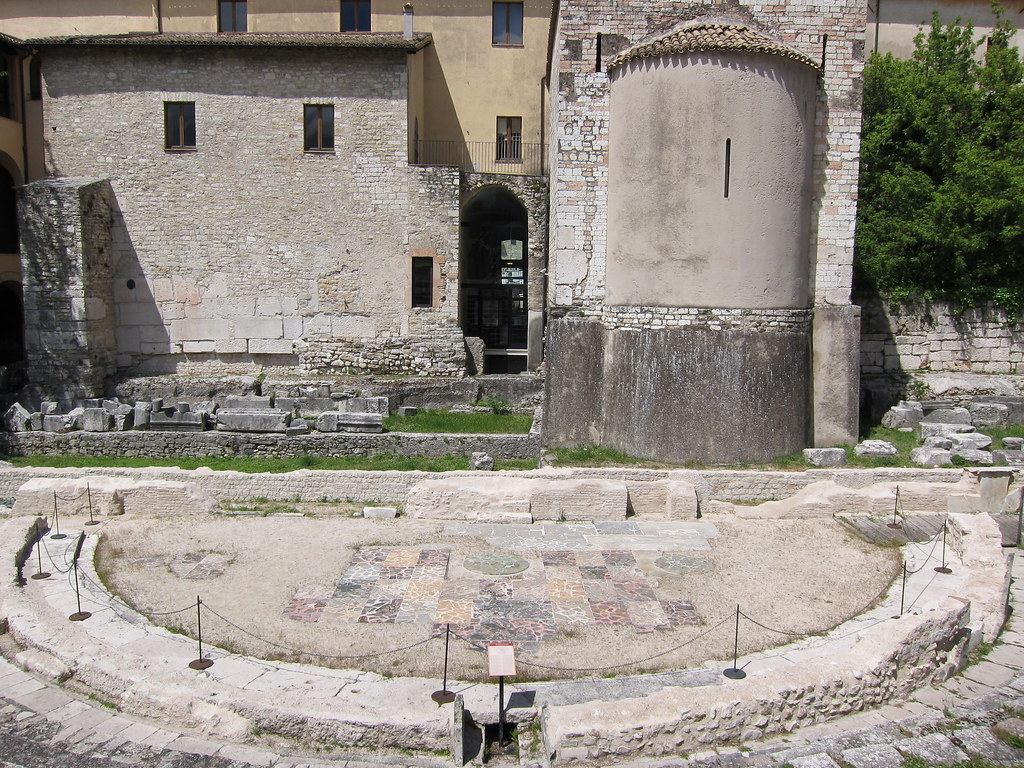 |
| The back of St. Agatha's Church and the orchestra, with remains of its colorful marble floor still visible. |
|
|
For a measly two euros I was allowed the clamber all over the benches and run through the tunnels underneath.

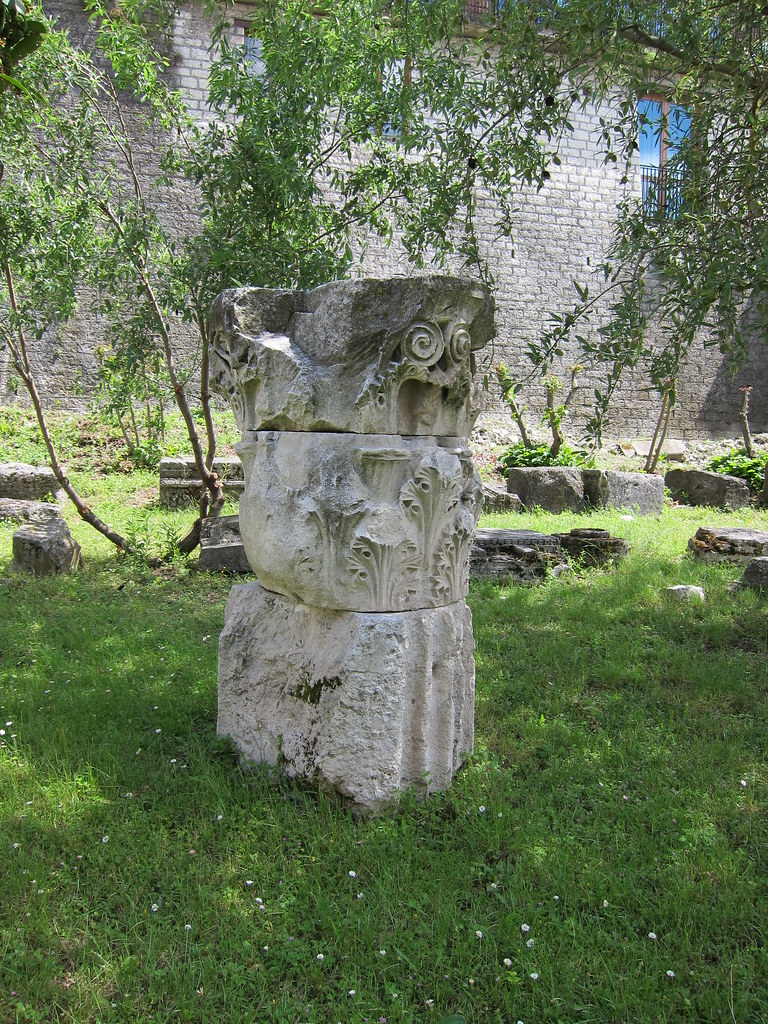 |
| A cool column in the yard behind the theater. |
 |
| The remains of the theater's facade. |
I loved the theater, but I was on a quest to find Spoleto's most famous sight, so I soon continued up the hill. Spoleto is just as lovely as Todi, but has a much greater variety of styles.
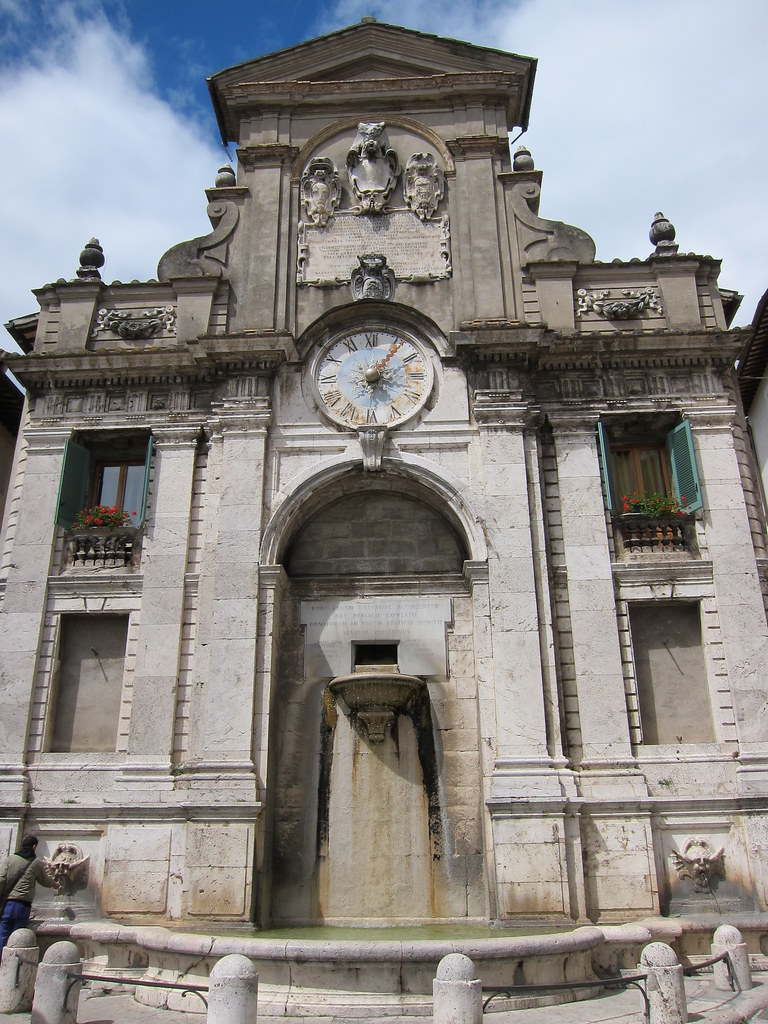 |
| A house with a fountain built into the facade. |
I pulled myself away from churches, piazzas, and interesting twisty streets until I came to a wide promenade encircling the crest of the hill. Only the fortress stands above it, and the whole town is spread out below.
 |
| The cathedral, as seen from the promenade. |
I followed the promenade around to the back of the hill. With my goal in sight, I went down into this olive grove to get a better look ...

... at the Ponte dei Torri (Bridge of Towers).
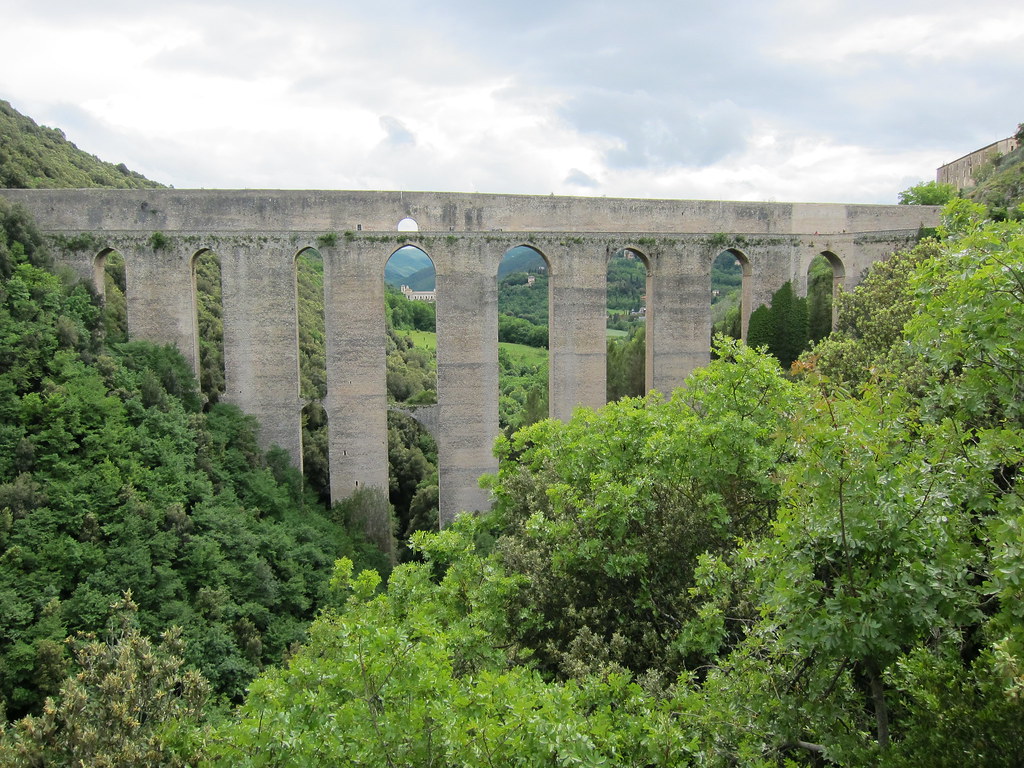 |
| View of the bridge from the olive grove. You can only see about 3/4 of its height in this picture. The gorge at the bottom is steep-sided but dry. |
The bridge was built in the 13th century, though according to Wikipedia, some scholars think it was built on the remains and to the plan of a much earlier Roman bridge. It connects Spoleto's hilltop to the much higher hill behind the town. The fortress stands above it on the Spoleto side, and a ruined guard tower at the other end.
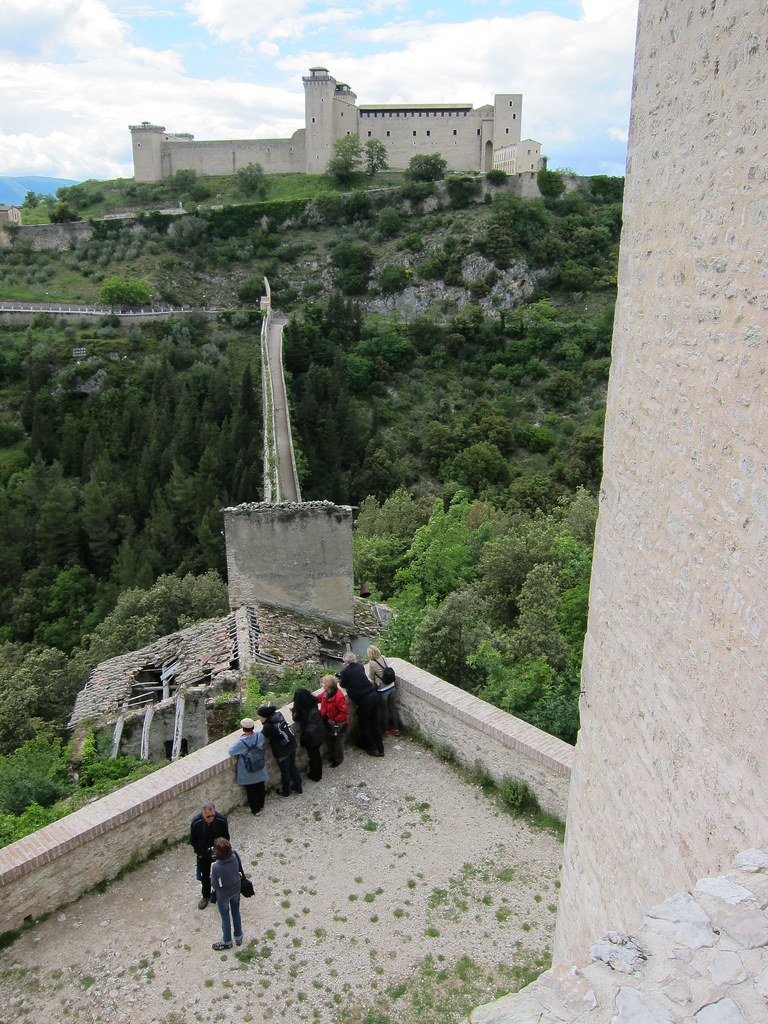 |
| The bridge is only wide enough for two, maybe three, horses to ride abreast. |
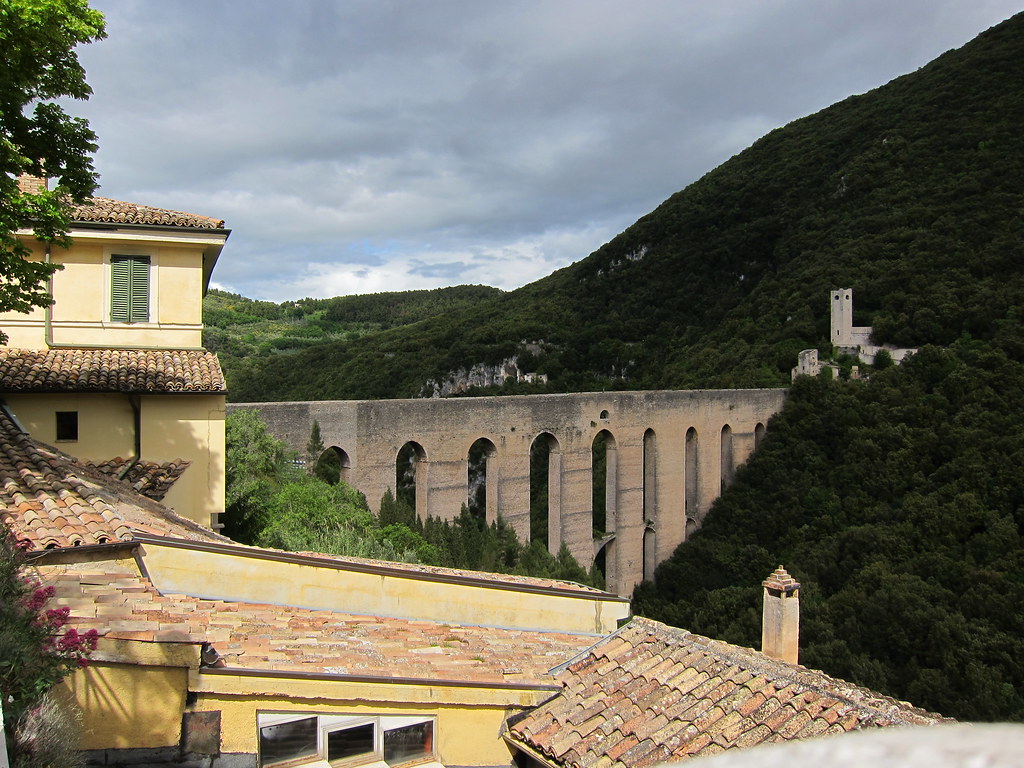 |
| View of the bridge and guard tower from the other side. |
I spent about an hour walking across the bridge, climbing on the ruins, and gawking at the view from as many angles as possible. Afterward, I still had some time to walk up to the fortress and wander back through the town before my train came.
 |
| Wild poppies growing along the road up to the fortress. We were too early to see sunflowers in Italy, but we caught the poppies right at their peak. |
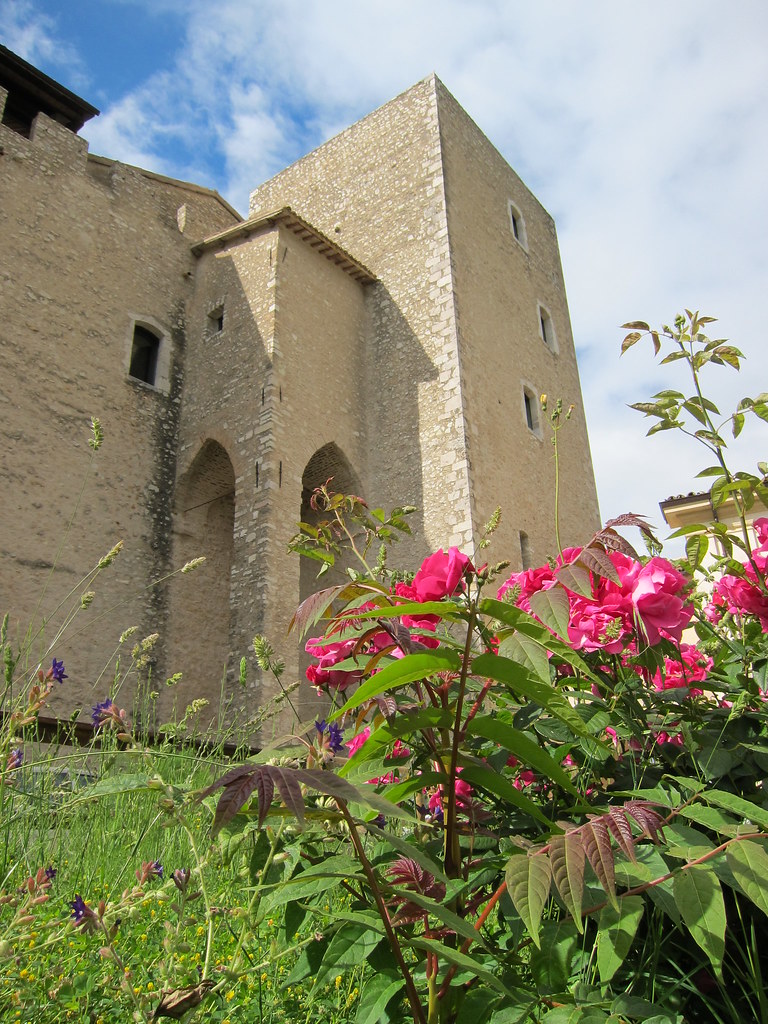 |
| Fortress tower and roses |
 |
| Fortress training yard with Umbrian hills beyond |
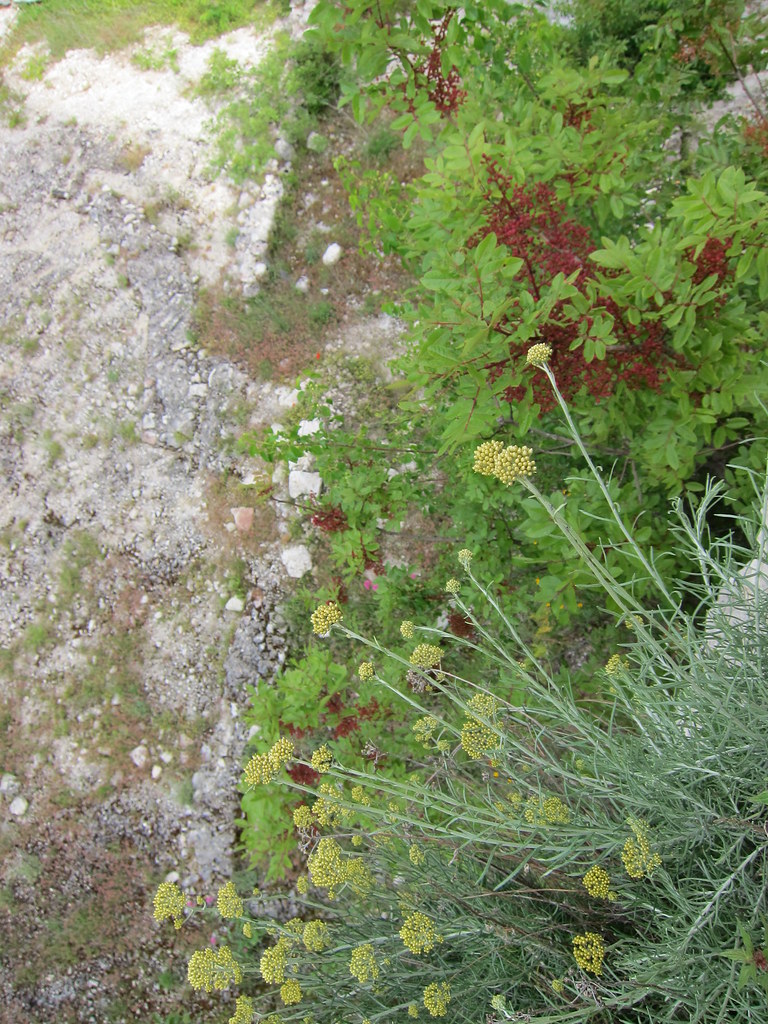 |
| Flowers growing on the wall above the training yard |
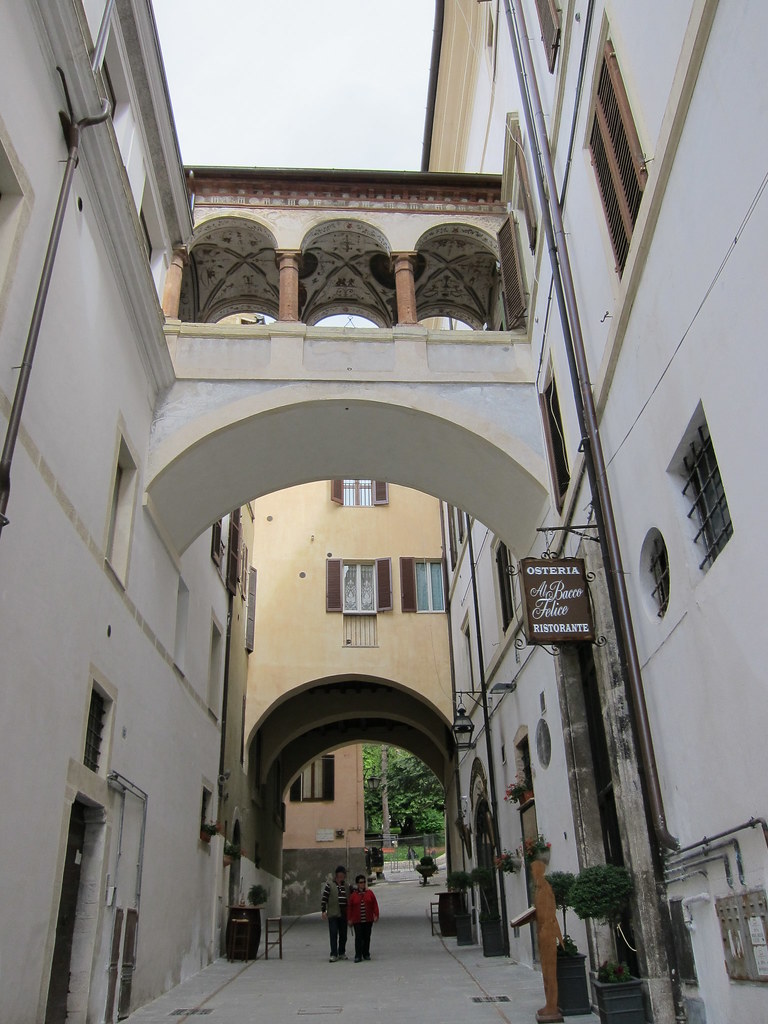 |
| I love how you can see the painted ceiling of this covered terrace from below. Quite a few buildings in Florence and around Umbria had top stories like this. |
Here is the cathedral and main piazza. The clouds very obligingly made a dramatic backdrop but refrained from soaking me.
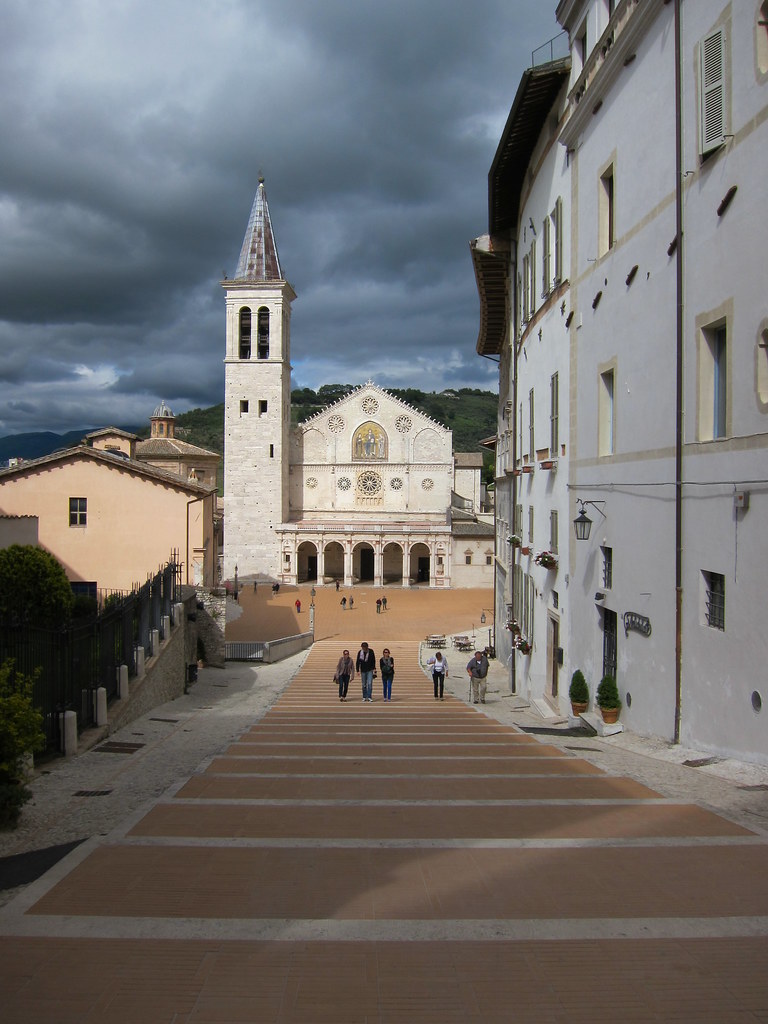
The cathedral boasts amazing frescoes by the Florentine painter Filippo Lippi. It is dedicated to Mary, so the fresco at the front depicts important moments from her life: the Annunciation, her death, the Nativity, and her coronation as the Queen of Heaven.
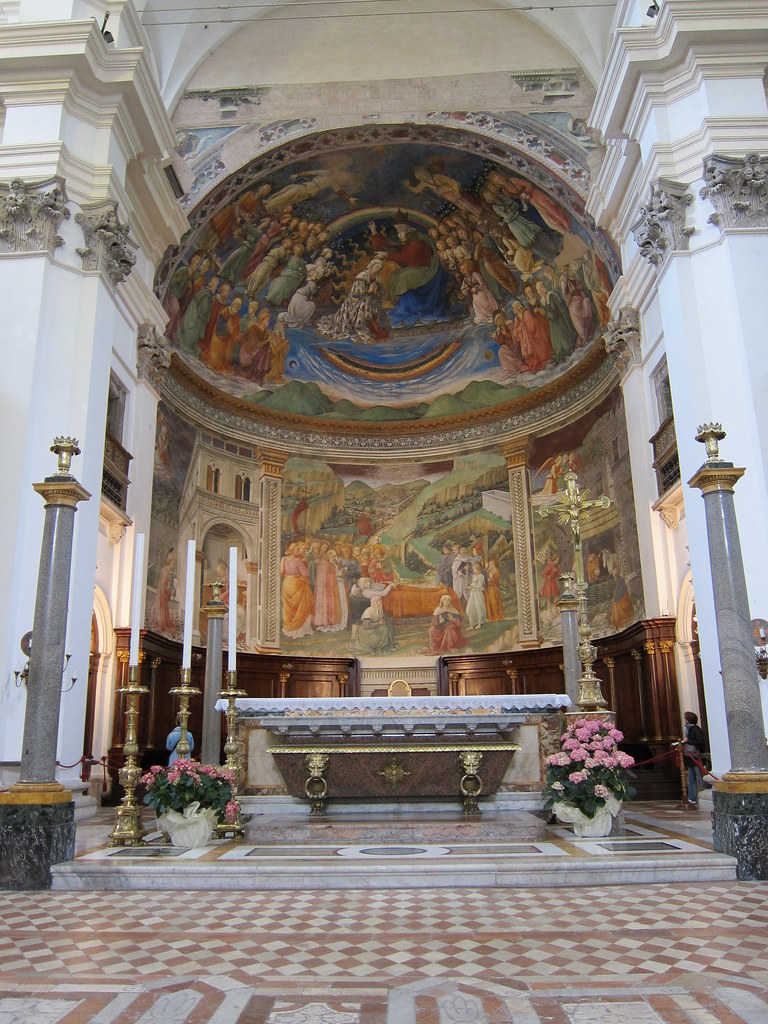
I saw a lot of Annunciations in Italy. I wish I could tell you about all the different formulations of the scene that I observed, but I'll just point out one odd thing about this one: the Holy Ghost is about to strike Mary on the shoulder.
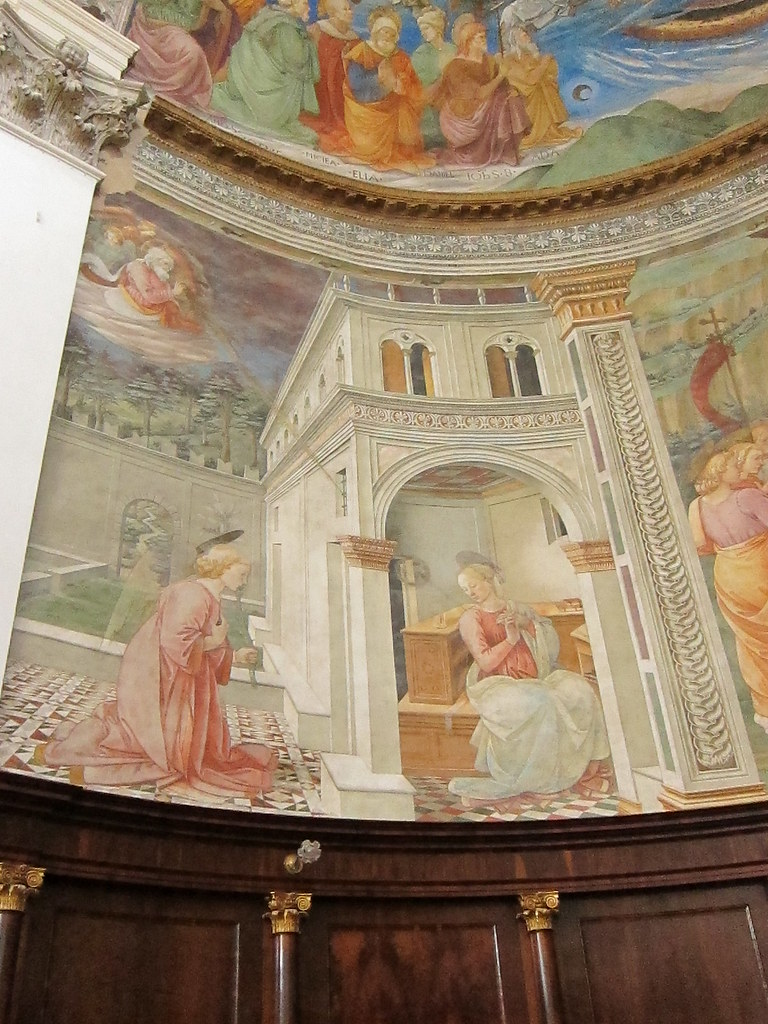
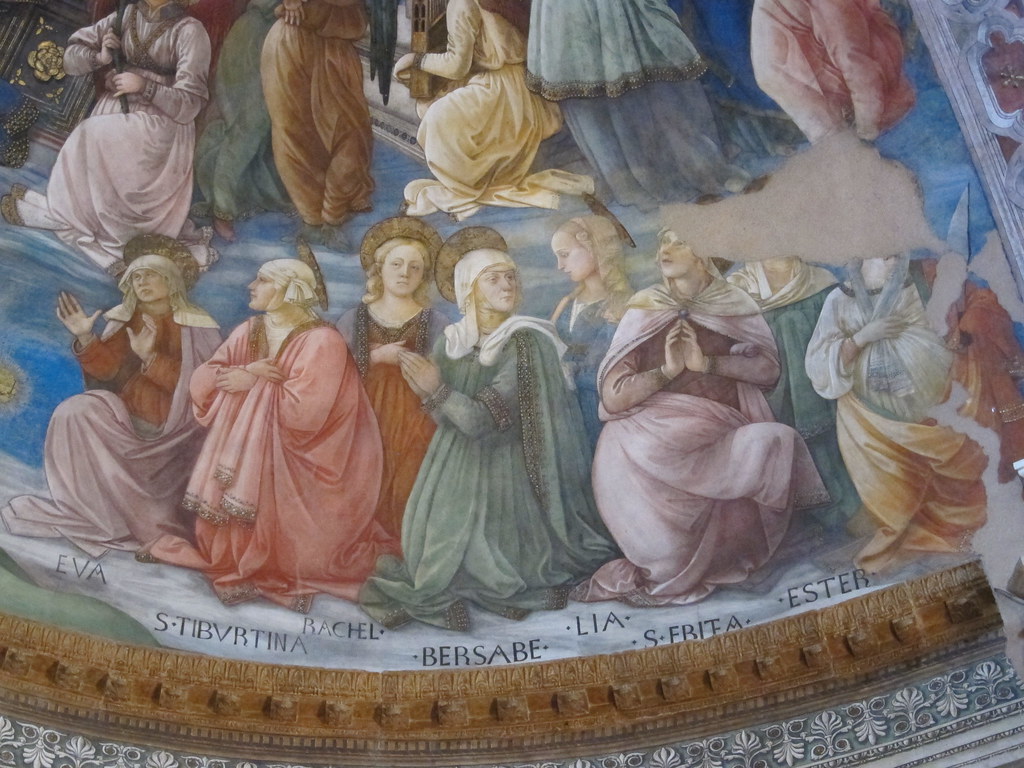 |
| Female prophets, sadly damaged. |
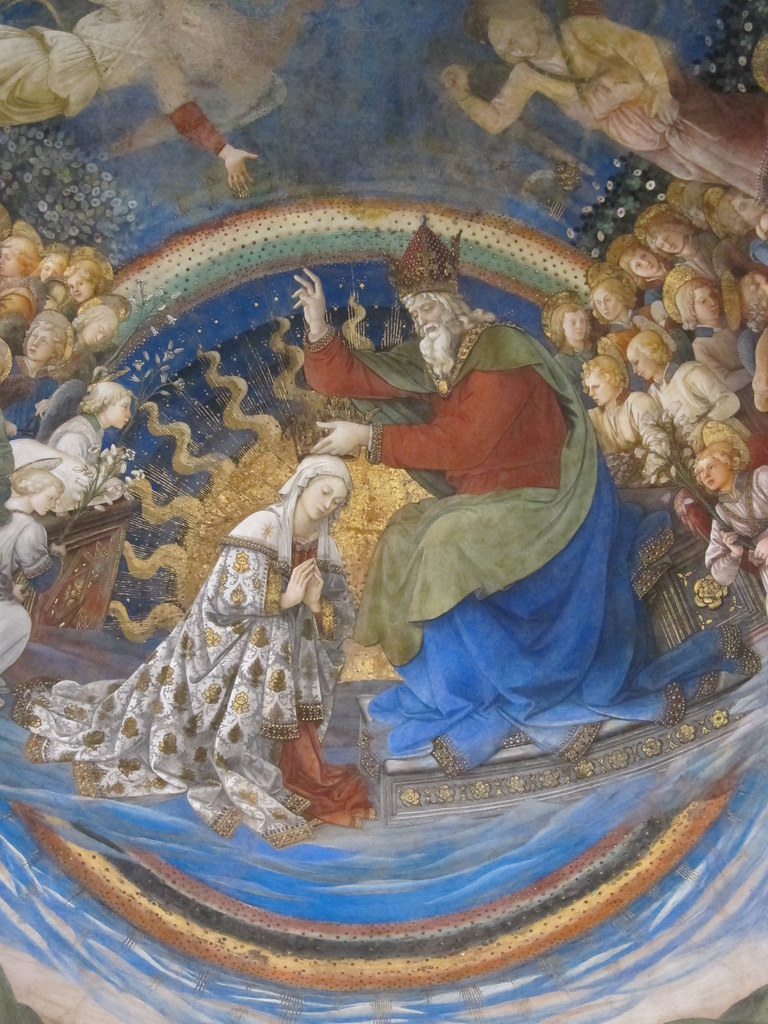
I'll leave you with a picture of the floor of the cathedral. At the time I couldn't think where I'd seen something similar, but during our friends' visit last week I realized that it looks rather like the floor of the Aachen Cathedral.








































No comments:
Post a Comment
Comments remind us that once upon a time we had friends.